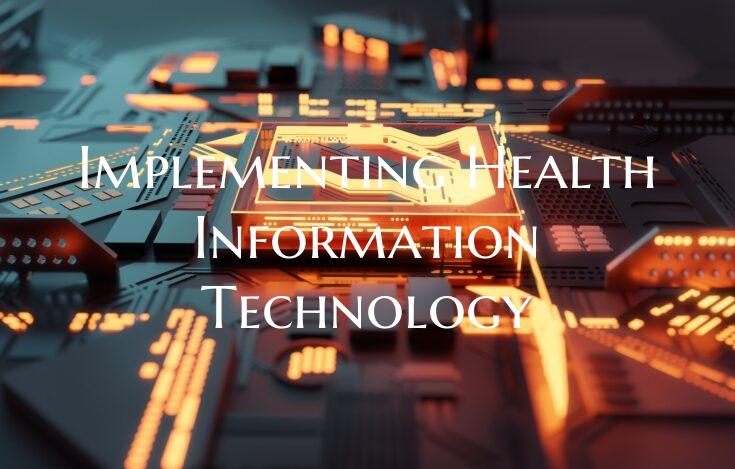Implementing Health Information Technology
In today’s rapidly evolving healthcare landscape, the adoption and implementation of Health Information Technology (HIT) have become crucial for improving patient care, enhancing operational efficiency, and facilitating better communication and collaboration among healthcare professionals. Healthcare organizations are increasingly realizing the benefits of HIT in streamlining processes, reducing errors, and ultimately enhancing overall healthcare delivery.
One of the primary advantages of implementing HIT is the automation of various administrative and clinical tasks, thus reducing the burden on healthcare professionals and allowing them to focus more on patient care. Electronic Health Records (EHRs) are a key component of HIT that centralize patient information, medications, treatment plans, and test results in one secure digital platform. This not only enables easy access to patient data but also ensures its accuracy and completeness, resulting in better decision-making by healthcare providers.
Another significant benefit of HIT implementation is the improvement of care coordination and communication among different healthcare stakeholders. With the use of electronic tools such as secure messaging systems and telemedicine platforms, healthcare providers can easily collaborate on patient care, share vital information in real-time, and make informed decisions promptly. This interconnected network of information exchange leads to more efficient and effective care delivery, especially in complex cases requiring multidisciplinary input.
Furthermore, HIT plays a vital role in enhancing patient engagement and empowerment. Patient portals and mobile health applications provide individuals with access to their own health records, educational resources, appointment scheduling, and communication with their healthcare providers. This level of engagement not only improves patient satisfaction but also promotes proactive self-management of health conditions, leading to better health outcomes in the long run.
As healthcare organizations continue to adopt and implement HIT solutions, it is essential to address challenges such as data security, interoperability, and staff training. Robust cybersecurity measures must be in place to safeguard sensitive patient information from potential threats and breaches. Interoperability standards need to be established to ensure seamless data exchange among different systems and providers. Additionally, ongoing training and support for healthcare staff are essential to maximize the benefits of HIT and ensure its successful integration into daily workflows.
In conclusion, the implementation of Health Information Technology is a transformative process that holds great promise for revolutionizing healthcare delivery. By harnessing the power of digital tools and systems, healthcare organizations can enhance patient care, improve outcomes, and drive efficiencies across the healthcare ecosystem. Embracing HIT is not just an option but a necessity in today’s technology-driven healthcare environment.

